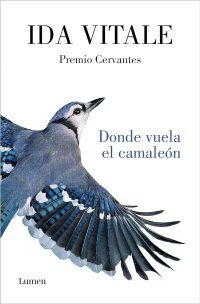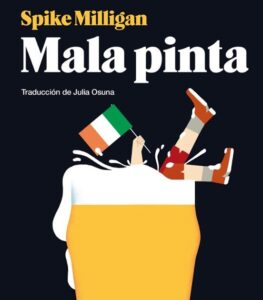
Where the chameleon flies
by Ida Vitale
An unpublished literary gem in Spain, by one of the most recognized writers of literature in Spanish, winner of the Cervantes, FIL Guadalajara and Reina Sofía awards
«It is at the same time intellectual and popular, universal and personal, transparent and deep. A fundamental reference for poets of all generations and in all corners of Spain.
Minutes of the Cervantes Prize jury
Originally published in 1996 and unpublished in Spain until now, this beautiful book by Ida Vitale, located halfway between prose and poetry, brings together stories, fables and allegories that make up a kind of human bestiary in which the Uruguayan Cervantes Prize winner It revisits some classic myths and makes room for Borgesian fantasy.
With formal perfection, an intelligent use of irony and a masterful use of all the expressive possibilities of our language, the author dazzles once again with these disturbing stories about beauty, pain, mystery and the profound question of existence. Where the chameleon flies is, ultimately, a small gem that amalgamates not only a poetic, but a way of seeing life.
Ida Vitale, born in 1923 in Montevideo, port of Lau – tréamont, Supervielle and Laforgue, where she studied humanities and was a literature teacher until the seventies. Very precociously they predicted her destiny, a poem by Gabriela Mistral, the fascination inherited by the natural world, and the guidance of José Bergamín (who wrote about her in 1947: «you give fire to shadow, in the ash flame, / you amaze if you illuminate, green branch»). Political adversities forced her, like so many other intellectuals, into exile: she lived in Mexico from 1974 to 1984 with her husband, the poet and professor Enrique Fierro, and although she returned with him to Uruguay for a few years, at the end of the eighties she established in Austin, Texas. Since 2018 she has resided again in Montevideo. Juan Ramón Jiménez, another decisive influence on his work, stated upon receiving his second collection of poems, Palabra dada, that he had filled his name with mystery and charm, and included it, for its “very natural penetration”, in a planned hidden anthology of young poets. . In a career that is more intense than extensive, since the fifties Ida Vitale has published poetry, criticism – on Felisberto Hernández or Enrique Casaravilla Lemos – various inventions and prestigious translations – by Mario Praz or Jules Supervielle -, and collaborated in important magazines in Hispanic America , such as March, Echo, Plural or Return. She published her first book, The light of this memory, Vitale in 1949, and with this she became one of the central poets of the fundamental and founding group of writers that Emir Rodríguez Monegal called the Generation of 45. Much of her lyrical production is published in Poesía reunida in 2017. His prose, sharp and light, of penetrating originality, can be read in Lexicon of affinities, Where the chameleon flies, Of plants and animals, The ABC of Byobu [y Shakespeare Palace]. The destiny of his poetic work has been recognized with the National Prize and an honorary doctorate in Uruguay, the Octavio Paz Prize and the Alfonso Reyes Prize in Mexico, the Reina Sofía Prize and the Federico García Lorca Prize in Spain, the Max Jacob Prize in France and now the Literary Prize in Romance Languages awarded by the Guadalajara International Book Fair. The great Colombian poet Álvaro Mutis envied the reader who began to frequent the work of Ida Vitale, since an unsuspected pleasure awaits him. In 2018 she was awarded the Cervantes Prize for her literary career.
Source: https://algunoslibrosbuenos.com/donde-vuela-el-camaleon


